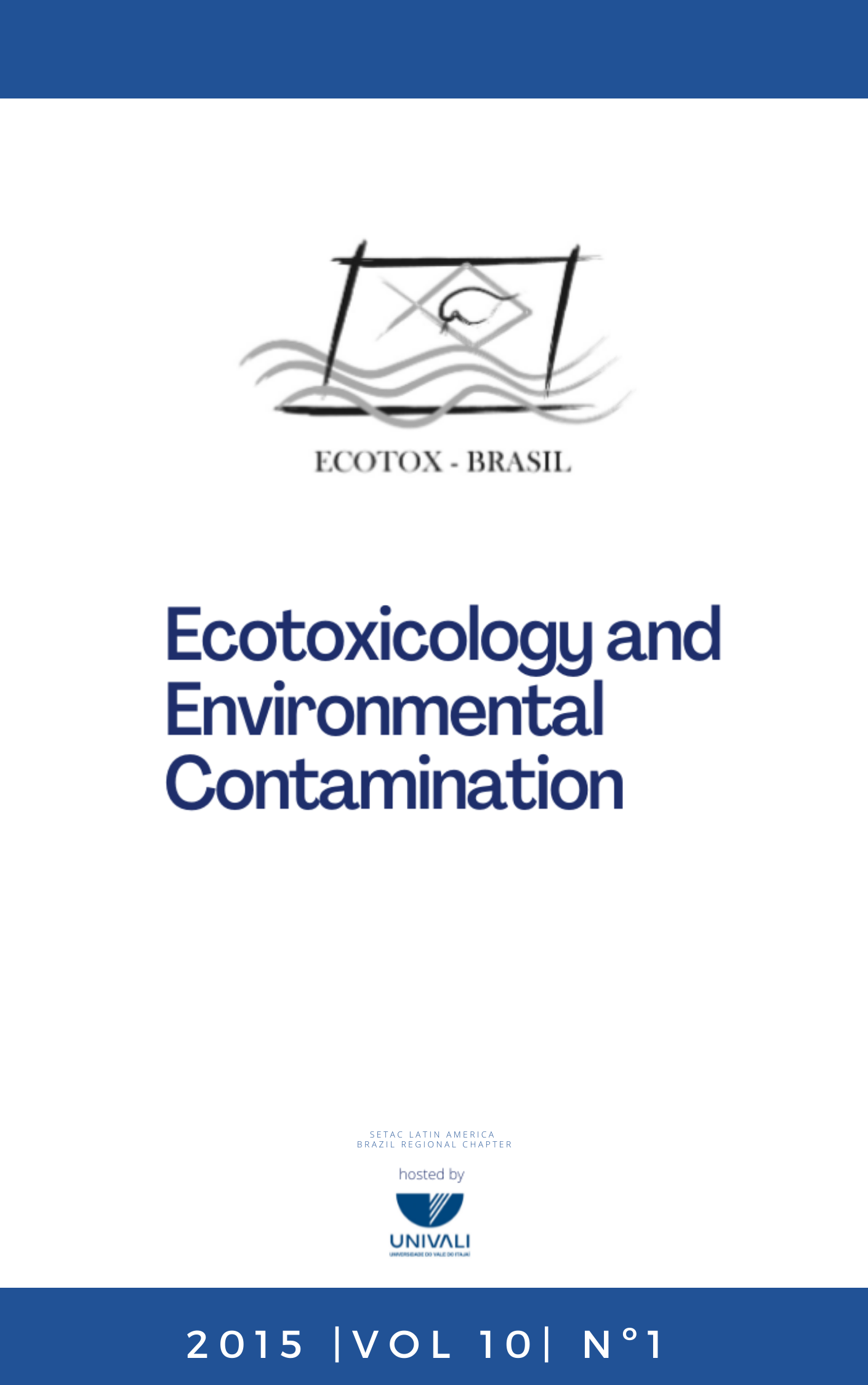Toxicity of Diuron, Diquat and Terbutryn to Cyanobacterial Mats
DOI:
https://doi.org/10.5132/eec.2015.01.11Abstract
This study investigated acute toxicity of Diuron, Diquat and Terbutryn to cyanobacterial mats collected from Wadi Gaza, Palestine. Toxicity was measured by the reduction of population growth of cyanobacterial mats exposed to various herbicide concentrations in the range of 0-15.44 μmole L-1. Optical density of cyanobacterial suspension was recorded using a spectrophotometer at 680 nm from time zero up to 8 days and taken as an indicator of growth. EC50 and ET50 values were estimated using linear regression equations. Results showed that cyanobacterial mats adapted and grew fast under laboratory conditions. The toxicity of Diuron, Terbutryn and Diquat reached 89.35, 76.02 and 71.24%, respectively. Toxicity of binary mixtures (Diuron and Diquat) decreased from 77.35% to 65.33% due to the reduction of Diuron concentration in the mixture. EC50 values for Diuron, Terbutryn and Diquat were 0.009, 0.031and 0.381 μmole L-1 whereas ET50 values were 32.32, 35.89 and 23.45 h, respectively. EC50 values of binary mixtures (B1-B3) were 0.004, 0.01 and 0.012 toxicity units. Tertiary mixtures (T1-T7) had a wide range of EC50 (0.043-2.9E-07) TUs. The mixture toxicity index (MTI) had positive and negative value in mixtures, indicating synergetic and antagonistic effects. Application of the above-mentioned herbicides may severely damage the ecosystem. Our results are the first of its kind in the region and may be considered as a guideline for future studies.Downloads
Published
How to Cite
Issue
Section
License
Copyright © 2006 ECOTOX-Brasil
Copyright notice: It is a condition for publication that manuscripts submitted to this journal have not yet been published and will not be simultaneously submitted or published elsewhere. By submitting a manuscript, the authors agree that copyright for their article is transferred to the Sociedade Brasileira de Ecotoxicologia (ECOTOX-Brasil) if and when the article is accepted for publication. The copyright covers the exclusive rights to reproduce and distribute articles, including reprints, photographic reproductions or any other reproduction of a similar nature, including translations. No part of this publication may be reproduced, stored in a retrieval system or transmitted in any form or by any means, electronic, mechanical, photocopying, recording or otherwise, without permission of the publisher.
Notice: While every effort is made by the EEC, editors and editorial board to see that no inaccurate or misleading data, opinions or statements appear in this journal, they wish to make it clear that the contents of the articles and advertisements published herein are the sole responsibility of the contributors or advertisers concerned. Accordingly, the EEC, the editorial board and editors and their respective employees, officers and agents accept no responsibility or liability whatsoever for the consequences of any inaccurate or misleading data, opinion or statement.




